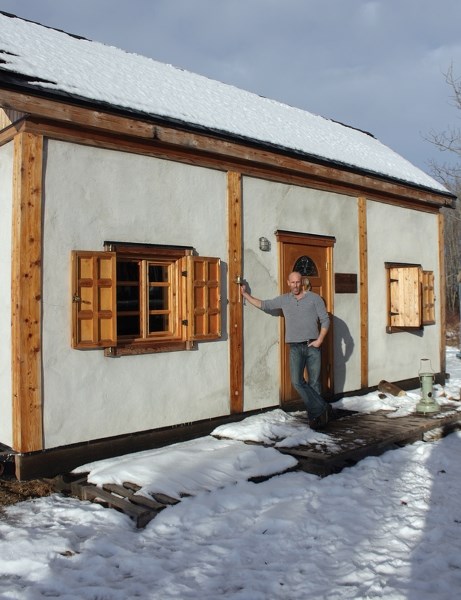Dion Lefebrvre’s hempcrete house project will be on full display at an Alberta-wide sustainable homebuilding contest in Calgary this summer.
Lefebvre’s 248 square-foot, ethically-sourced, solar-powered home constructed from hempcrete has worked so well he’s building another for the first-ever Grow Calgary Micro Home Design and Build competition which runs June 1 to Sept. 15.
“I’ve assembled a team of absolutely phenomenal natural builders from around western Canada to help put the spotlight on natural building,” he said. “We’ve got some heavy sponsorship, a crackerjack team and we’re going for the triple crown. It’s really going to be fun.”
The 100 square-foot home will be built in Westlock and trucked to Calgary for display and judging. Lefebvre said he was planning to leave the house there to help the city with its affordable housing project. He added that he is also entering his current model in a separate category in the competition.
“It’s about providing the essentials for life. Food, shelter, warmth,” he said. “Grow Calgary has done just a remarkable job so far, but now they’re branching off into the tiny home movement.”
For him, pushing the limits of the technology is the main goal. Getting the material recognized by Municipal Affairs and added under the Alberta Building Code as a viable building material wouldn’t be too bad either.
His decision to enter the contest follows a deal with Westlock County that lets him keep the house.
The project almost got tripped up in red tape after the county officials informed Lefebvre that he was violating building codes. However, after a meeting with the municipality Jan. 12, the two came to a compromise.
“The county has offered to not go forward with requiring a permit for the house — they’re classifying it as a research project,” he said. “They’ve offered to permit the land use instead, which sidesteps a lot of red tape. They’re working with me, which is fantastic. I’m getting a great support from the community.”
Hempcrete is a form of cement that is made from the wood-like fibre of a hemp stalk and lime.
While 15 per cent less dense than traditional concrete, the material is considerably lighter and not as brittle as normal concrete.
It can be used as a building material as well as an insulator, and is mold, earthquake and fire resistant. It has been used for several years in construction in the United Kingdom and European Union.
“Things are really coming to fruition right now. There is a lot of action happening in big business regarding development of hemp as a building material,” he said. “It’s just blowing up right up.”
Also, since the hemp has to be grown first, the production of hempcrete could be thought of as a greenhouse gas sink. Lefebvre said that producing hemp could potentially be a boost to the local economy.
“Part of my motivation for doing this is for the agricultural community,” he said. “There is just so much economic potential in this.”
Not only is the production of hempcrete environmentally friendly, the finished product can absorb up to 95 per cent of its mass in humidity and gases, so the house is actually taking carbon dioxide out of the atmosphere.
When it comes time to take the building down, hempcrete can be ground down and used as fertilizer.
“Everything in this building is built out of garbage,” said Lefebvre. “The whole building is based on common sense.”



